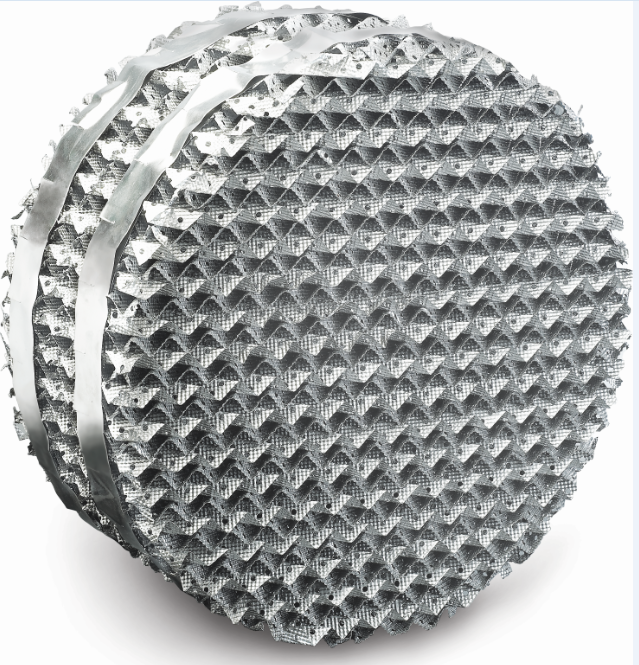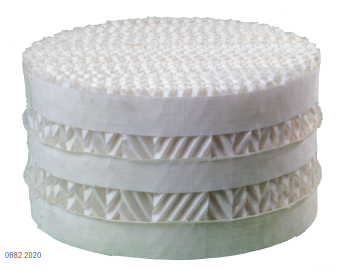ODSTŘEDIVKY
STRUCTURED PACKING

Structured Packing Solutions for Efficient Separation
The development of structured packing dates back to the early 1960s, when the first fabric fillings of the SULZER BX and CY type were applied. Using these packing, it was possible for the first time to perform difficult separation tasks and to separate heat-sensitive substances by distillation.
Another milestone was the development of structured fillers, e.g. Mellapak, in the 1970s. Originally designed to cover the moderate vacuum range up to atmospheric pressure, Mellapak opened up new and unforeseen perspectives in all areas of large-scale mass transfer components.
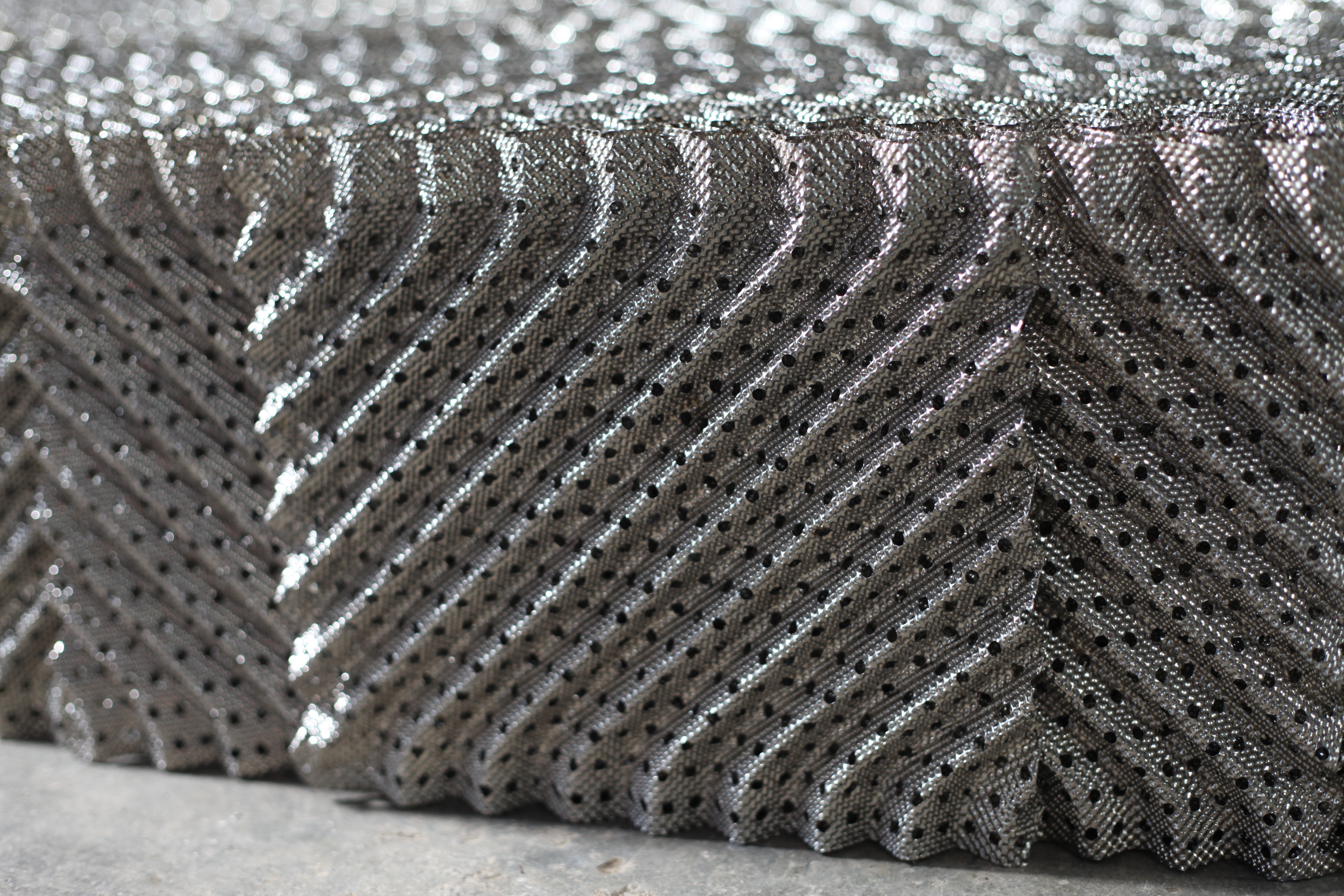
Gauze Packing typu EX, DX / BX a CY / BXPlus / CYplus
Standard structured packings are hardly suitable for use in laboratory columns of less than 50 mm diameter. Sulzer laboratory packings are especially designed for this purpose.
• Laboratory columns from 20 to 80 mm
• Vacuum from 1 mbar
• Where a high number of theoretical stages is
required (DX, EX)
• Distillation of components prone to decomposition
• Preliminary assessement of a separaton task
Type EX:
• Highest possible number of theoretical stages,
even with very low liquid loadings
• Same pressure drop per theoretical stage as Sulzer
BX packing
• Small hold‑up
Type DX:
This packing has a coarser structure and hence a lower number of theoretical stages.
Suitable for laboratory columns where a modest num-ber of theoretical stages is required, together with low pressure drop and high capacity.
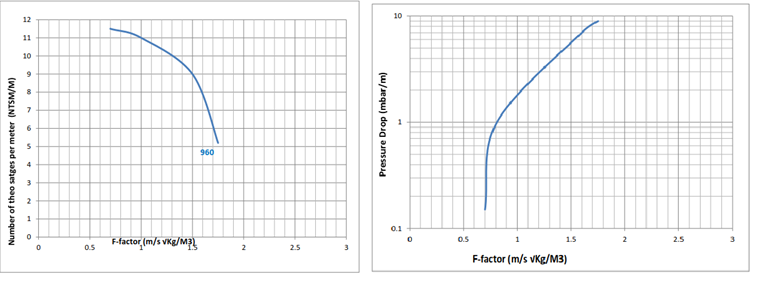
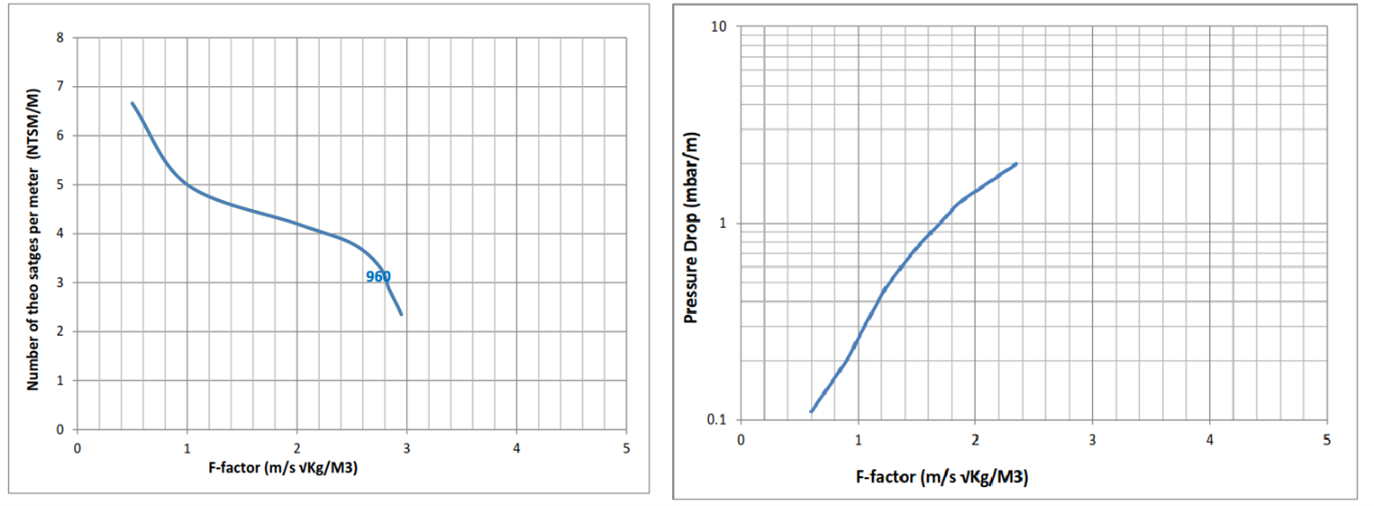
Structured Packing
Structured packing is the most widely used packing worldwide. It has proven excellent performance in columns with diameters up to 15 m. It is supplied in sheet metal thicknesses from 0.1 mm up.
Special features
• Pressure drop per theoretical stage 0.3‑1.0 mbar
• Pressure drop at 70‑80% flooding about 2 mbar/m
• Minimum liquid load approx. 0.2 m3/m2h
• Maximum liquid load up to more than 200 m3/m2h
High-Capacity Structured Packing
HC structured packing represents the novel, high capacity packing (typically 25 to 30 % more capacity compared with conventional structured packing). At the lower and upper end of each packing element, the orientation of the corrugation gradually ap-proaches the vertical axis.
Advantages of this geometrical modification is the vapor flow smoothly changes direction at the interface between two packing elements. At the interface vapor flow is nearly parallel to the vertical axis of the column. The gas velocity is therefore reduced by about 25% compared to the velocity inside the packing element.
Both factors reduce the pressure drop and the shear forces, which are especially critical at the inter-face due to the presence of thicker and less stable liquid films.
Structured packing from plastics
The plastic versions of MELLAPAK have proven operational record in various types of absorption and desorption columns. jsou k dispozici také v různých druzích termoplastů. Mohou být dodávány výplně vyráběné z PP, PVC C, PVDF, Teflonu® PFA a PEEK.
Plastové gázové výplně byly průmyslově používány s velkým úspěchem po mnoho let. Speciální gázová struktura poskytuje velmi dobrou smáčivost, a to i ve vodních systémech. Tato výplň se primárně používá pro kolony s nízkým zatížením kapalinou
Grid Structured packing
Grid packing combines the efficiency of struc‑ tured packings with the mechanical resistance of a grid.
This structured packing is used wherever the mechanical strength of structured packings is a concern or where coking is likely to occur. Grid packing is not sensitive to coking and fouling due its smooth surface and geometrical structures.

